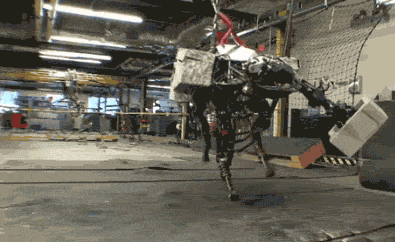In a must-read FT Alphaville post, Mackenzie Weinger writes about the U.S. Department of Defense’s plans for warfare of the future, which puts a heavy accent on human-machine tandems. Perhaps such a focus will ease the minds of soldiers who fear they’re on the verge of being technologically unemployed. The U.S. military has long desired to robotize the military as much as possible, and the freestyle-chess approach to combat will only be employed as long as its the most effective (and cost-effective) means. I don’t think we’ll get to choose the future as much as it will be decided by the progress of AI. That, of course, is a troubling prospect.
An excerpt from Weinger:
So what’s the DoD looking at in terms of technology for the future of the US military? As one would expect, there’s a handy set of “five building blocks” they’ve identified regarding AI and autonomy, along with plenty of acronyms. Take a look at the US military’s take on AI and weapon tech, as laid out in Work’s speech (bolding, links and brackets our own):
The first are autonomous deep learning machines systems. Now deep learning systems are already changing the way we analyse data in the financial community, in the intelligence community, but we are going to use them to improve indications in warning. The AI guys say that what is happening in the grey zone with ‘little green men’ is nothing more than a big data analytics problem. And they are absolutely convinced that we can create learning machines that will give us indication and warning that something is happening in the gray zone [conflicts that aren’t formal wars and don’t resemble conventional warfare. Think Russia and Crimea/Ukraine] … we believe strongly that humans should be the only ones to decide when to use lethal force, but when you’re under attack, especially at machine speeds, we want to have a machine that can protect us. So an example is air defense systems, where the engagement windows are steadily shrinking… and on cyberdefense, you cannot have a human operator operating on human speed fighting back a determined attack. You’re going to have to have a learning machine that does that.
The second component is what we call human machine collaboration. Decision making. 1997, computer beats Kasparov, world champion in chess. Everyone goes ‘wow’. But in 2005, two amateurs working with three PCs defeated a field of chess champions and machines themselves. … [it’s about] the strategic analysis of a human combined with the tactical acuity of a computer.•

